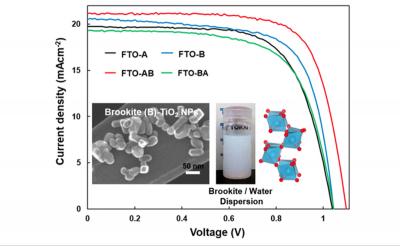Researchers at Tokai University report a systematic study on the effects that using different forms of titanium oxide in planar perovskite solar cells has on the performance of the devices.

The team from Tokai university focused on the electron-transport layer. The material of choice for this component is often titanium oxide, whose electronic structure makes it easy to collect electrons from the perovskite layer. Titanium oxide has several crystal polymorphs including anatase, brookite, and rutile. They have different structures and properties and their distinct morphologies influence the quality of the perovskite layer, so the choice of polymorph influences the overall performance of the solar cell. This is why understanding this influence is important for optimizing the efficiency of devices.
The researchers used a low-temperature and environmentally friendly technique to prepare highly conductive and single-crystalline brookite nanoparticles that they used to produce heterophase anatase'brookite and brookite'anatase electron transport layers, as well as layers based on single-phase anatase and brookite. To compare the performance of the various electron-transport layers, the researchers measured their morphological, optical and structural characteristics, evaluated the interface between the layers and the perovskite, and finally measured the performance of the resulting solar cells.
They found that the use of single-phase brookite resulted in a 14.92% power efficiency, the highest performance reported to date for this type of electron-transport layer. The heterophase layers resulted in performances up to 16.82% for the anatase'brookite phase. As the authors comment, "the present work presents an effective strategy by which to develop heterophase junction electron-transport layers and manipulate the interfacial energy band to further improve the performance of planar perovskite solar cells and enable the clean and eco-friendly fabrication of low-cost mass production."